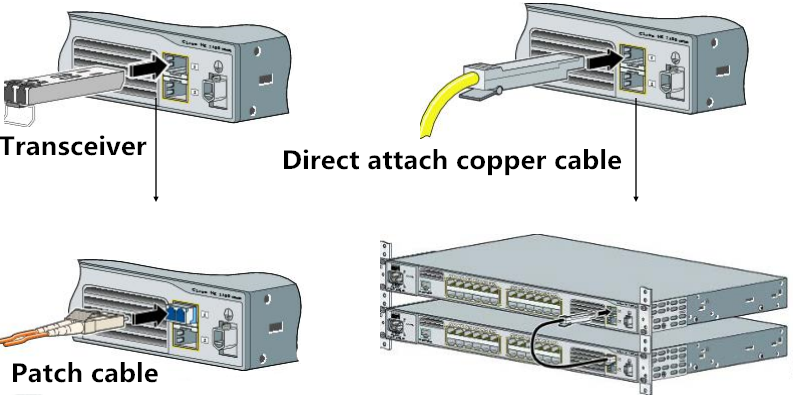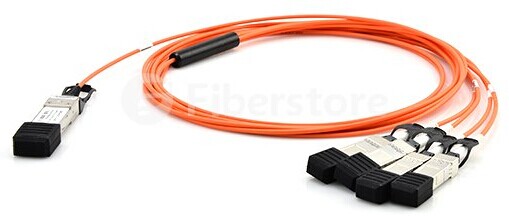As new emerging networking standards, 40G and 100G network have been achieved initial success. But they are based on the 10G network. With the growing numbers of small business enterprises, 10G SMB switches are also in a large demand. TP-Link has introduced the T1700 Series 10G Smart Switches: the T1700X-16TS Full 10 Gigabit Smart Switch and the T1700G-28TQ Gigabit Stackable Smart Switch with 10G Uplink. They provide high levels of performance and the increased scalability that meet the requirements of SMBs. This article would introduce the T1700G-28TQ and its compatible optics.
As one of the TP-LINK’s Gigabit stackable smart switches, the T1700G-28TQ is able to provide reliable, cost-effective and resilient networking solutions for SMBs. The switch is equipped with 24 10/100/1000Mbps RJ-45 ports and 4 dedicated 10G SFP+ slots which can be used for uplinks and/or stacking, providing a strong interconnection between access and aggregation.

Figure1:TP-Link T1700G-28TQ Switch(Resource: www.TP-Link.com)
The T1700G-28TQ supports rich L2 features, including 802.1Q tag VLAN, Port Isolation, Port Mirroring, STP/RSTP/MSTP, Link Aggregation Groups, and 802.3x Flow Control function. Besides, T1700G-28TQ supports L2+ feature static routing, which provides simple network segmentation by routing internal transmissions to make the ow of network traffic more efficient.
The stack system of T1700G-28TQs supports up to 40Gbps bi-directional stacking bandwidth with built-in redundancy and auto-failover. The switch supports up to 6 units in a stack, which allows it to provide up to 144 GE ports, 12 available 10G SFP+ uplinks and 768Gbps switching capacity, offering high-density developments as well as flexibility for future network expansion need.
The T1700G-28TQ supports IP-MAC-Port Binding, Port Security, Storm control, and DHCP Snooping, which help to protect the network from broadcast storms, ARP attacks, and more. And the switch supports 802.1X, which allows network clients to be authenticated through external Radius servers and the guest VLAN function allows non-802.1X clients to access specific network resources.
The T1700G-28TQ is easy to use and manage. It supports various user-friendly standard management features, such as intuitive web-based Graphical User Interface (GUI), industry-standard Command Line Interface (CLI), SNMP (v1/2/3), and RMON. This allows the switch to provide valuable status information and send reports on abnormal events. Comprehensive IPv6 support management ensures a smooth migration to an IPv6-based network. It also supports Dual Image to provide improved reliability and network uptime.
As being mentioned, the TP-Link T1700G-28TQ has 24 10/100/1000Mbps RJ-45 ports and 4 dedicated 10G SFP+ slots to achieve network connectivity. And it is a switch supports different optical modules and network cables. For the 10/100/1000Mbps RJ-45 ports, you can use 100BASE-TX or 1000Base-T optical transceiver with UTP category 5, 5e or above cable (maximum 100m) to achieve the link. Besides, you can also use 1000BASE-X with singlemode or multimode fiber cable to connect.

Figure2: Optional choices for 10G network
As for the 10G SFP+ ports, there are two approaches to achieve transfer the data. You can choose 10G optical transceivers or 10G DAC cables to transfer data. The TP-Link T1700G-28TQ support 10BASE-T with UTP category 3, 4, 5 cable (maximum 100m), 10GBASE-LR and 10GBASE-SR to connect. In addition, you can use TP-LINK TXC432-CU1M or TP-LINK TXC432-CU3M to achieve the link.
The main compatible optical modules and cables are listed in the below:
- 10BASE-T: UTP category 3, 4, 5 cable (maximum 100m)
- 100BASE-TX/1000Base-T: UTP category 5, 5e or above cable (maximum 100m)
- 1000BASE-X: MMF, SMF
- 10GBASE-LR
- 10GBASE-SR
- TP-LINK TXC432-CU1M
- TP-LINK TXC432-CU3M
TP-Link T1700G-28TQ provides cost-effective solution for 10G SMB networking. This article mainly discussed about its definition, features and benefits as well as compatible optical modules and cables. If you are looking for its compatible optical modules and cables, FS.COM is a nice choice.










